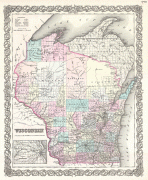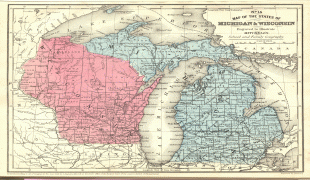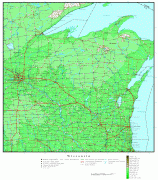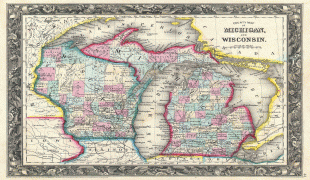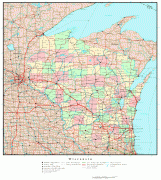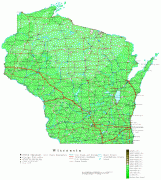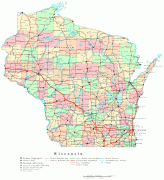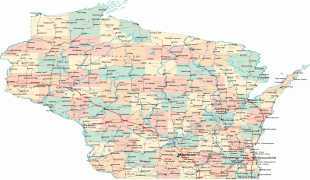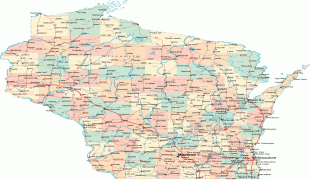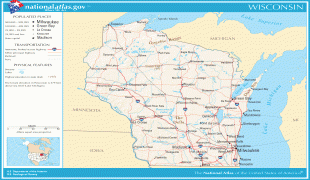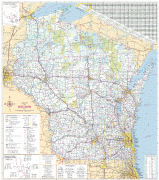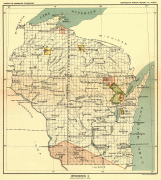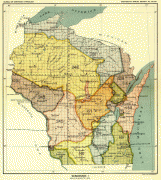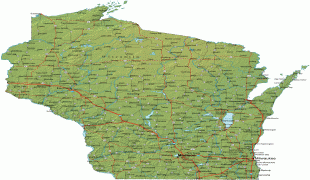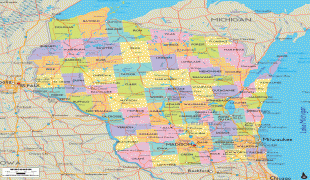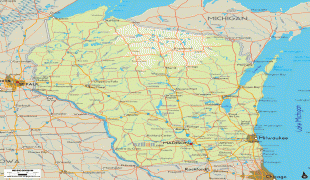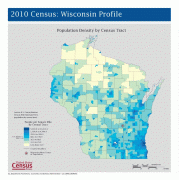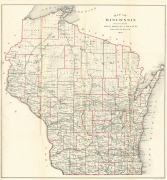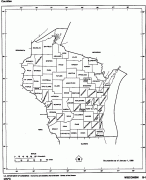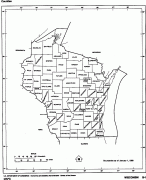Wisconsin
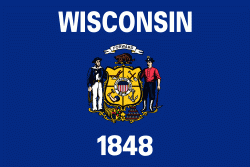 |
 |
The bulk of Wisconsin's population live in areas situated along the shores of Lake Michigan. The largest city, Milwaukee, anchors its largest metropolitan area, followed by Green Bay and Kenosha, the third- and fourth-most-populated Wisconsin cities respectively. The state capital, Madison, is currently the second-most-populated and fastest-growing city in the state. Wisconsin is divided into 72 counties and as of the 2020 census had a population of nearly 5.9 million.
Wisconsin's geography is diverse, having been greatly impacted by glaciers during the Ice Age with the exception of the Driftless Area. The Northern Highland and Western Upland along with a part of the Central Plain occupy the western part of the state, with lowlands stretching to the shore of Lake Michigan. Wisconsin is third to Ontario and Michigan in the length of its Great Lakes coastline. The northern portion of the state is home to the Chequamegon-Nicolet National Forest.
At the time of European contact the area was inhabited by Algonquian and Siouan nations, and today is home to eleven federally recognized tribes. During the 19th and early 20th centuries, many European settlers entered the state, most of whom emigrated from Germany and Scandinavia. Wisconsin remains a center of German American and Scandinavian American culture, particularly in respect to its cuisine, with foods such as bratwurst and kringle. Wisconsin is home to one UNESCO World Heritage Site, comprising two of the most significant buildings designed by Wisconsin-born architect Frank Lloyd Wright: his studio at Taliesin near Spring Green and his Jacobs I House in Madison.
The state is one of the nation's leading dairy producers and is known as "America's Dairyland"; it is particularly famous for its cheese. The state is also famous for its beer, particularly and historically in Milwaukee, most notably as the headquarters of the Miller Brewing Company. Wisconsin has some of the most permissive alcohol laws in the country and is well known for its drinking culture. Its economy is dominated by manufacturing, healthcare, information technology, and agriculture—specifically dairy, cranberries and ginseng. Tourism is also a major contributor to the state's economy. The gross domestic product in 2020 was $348 billion.
The word Wisconsin originates from the name given to the Wisconsin River by one of the Algonquian-speaking Native American groups living in the region at the time of European contact. French explorer Jacques Marquette was the first European to reach the Wisconsin River, arriving in 1673 and calling the river Meskousing (likely ᒣᔅᑯᐤᓯᣙ meskowsin) in his journal. Subsequent French writers changed the spelling from Meskousing to Ouisconsin, and over time this became the name for both the Wisconsin River and the surrounding lands. English speakers anglicized the spelling from Ouisconsin to Wisconsin when they began to arrive in large numbers during the early 19th century. The legislature of Wisconsin Territory made the current spelling official in 1845.
The Algonquian word for Wisconsin and its original meaning have both grown obscure. While interpretations vary, most implicate the river and the red sandstone that lines its banks. One leading theory holds that the name originated from the Miami word Meskonsing, meaning "it lies red", a reference to the setting of the Wisconsin River as it flows through the reddish sandstone of the Wisconsin Dells. Other theories include claims that the name originated from one of a variety of Ojibwa words meaning "red stone place", "where the waters gather", or "great rock".
Map - Wisconsin
Map
Country - United_States
 |
 |
| Flag of the United States | |
Indigenous peoples have inhabited the Americas for thousands of years. Beginning in 1607, British colonization led to the establishment of the Thirteen Colonies in what is now the Eastern United States. They quarreled with the British Crown over taxation and political representation, leading to the American Revolution and proceeding Revolutionary War. The United States declared independence on July 4, 1776, becoming the first nation-state founded on Enlightenment principles of unalienable natural rights, consent of the governed, and liberal democracy. The country began expanding across North America, spanning the continent by 1848. Sectional division surrounding slavery in the Southern United States led to the secession of the Confederate States of America, which fought the remaining states of the Union during the American Civil War (1861–1865). With the Union's victory and preservation, slavery was abolished nationally by the Thirteenth Amendment.
Currency / Language
| ISO | Currency | Symbol | Significant figures |
|---|---|---|---|
| USD | United States dollar | $ | 2 |
| ISO | Language |
|---|---|
| EN | English language |
| FR | French language |
| ES | Spanish language |






